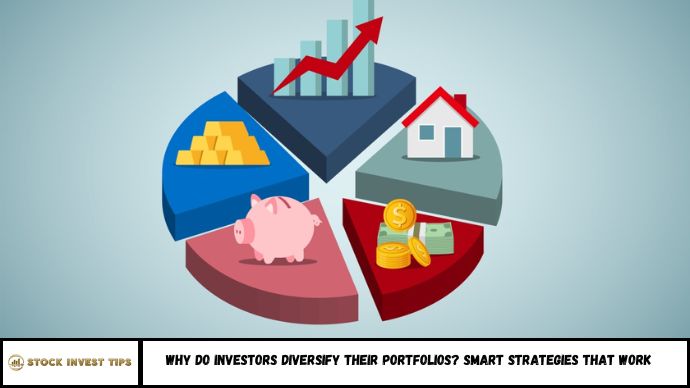Portfolio diversification is a fundamental strategy investors use to reduce risk, improve long-term returns, and manage market volatility. By spreading investments across various asset types and sectors, investors limit the impact of any single loss. This article explores why diversification matters, how it works, and actionable tips to create a diversified portfolio tailored to your goals.
Portfolio diversification means spreading your investments across various assets and securities so your returns aren’t overly reliant on any one investment. Experts recommend this strategy because it helps reduce risk by limiting exposure to a single asset type—without significantly lowering potential returns. In fact, a well-diversified portfolio can often lead to stronger long-term performance.
“Don’t Put All Your Eggs in One Basket”
In 2008, millions of investors saw their portfolios plummet as the financial crisis wiped out single-sector investments overnight. Those who had diversified portfolios fared far better—why?
The answer lies in a principle as old as investing itself: diversification. Whether you’re investing $1,000 or $1 million, diversification is one of the most effective tools to manage risk and ensure long-term stability.
This article will cover:
- What diversification is and how it works.
- Key reasons why investors use this strategy.
- Real-world examples and updated market data.
- Tips on how to build a balanced investment portfolio.
What Is Portfolio Diversification?
Portfolio diversification means spreading your investments across different asset classes, industries, or geographic regions to minimize exposure to any single risk.
Rather than relying on one stock or sector, a diversified portfolio might include:
- Stocks and bonds
- Real estate and commodities
- Domestic and international assets
The goal? Reduce overall risk while still pursuing returns.
Why Do Investors Diversify? Key Benefits Explained
1. Reduces Risk of Major Loss
By holding a mix of assets, one poor-performing investment is offset by others that may perform better. This helps protect against total portfolio collapse.
2. Smooths Out Market Volatility
Diversification acts like a shock absorber. Volatile market conditions affect different sectors in different ways. A diverse mix reduces the impact of short-term swings.
3. Enhances Long-Term Returns
According to Morningstar (2025), diversified portfolios outperformed single-asset investments by over 15% on average over the past 10 years, proving that risk management supports stronger long-term gains.
4. Provides Exposure to More Opportunities
You’re not limited to just one industry or country. Diversification opens doors to:
- Emerging markets
- Alternative investments
- Innovative sectors like green energy or tech
5. Matches Risk With Investment Goals
Diversification allows for personalized portfolio strategies based on:
- Time horizon
- Risk tolerance
- Income needs
Types of Diversification Strategies
Asset Class Diversification
Invest across:
- Equities
- Bonds
- Cash
- Real estate
- Commodities
Sector Diversification
Spread investments over different industries:
- Technology
- Healthcare
- Financials
- Consumer goods
Geographic Diversification
Don’t rely solely on your home country. Consider:
- U.S. markets
- International developed markets
- Emerging economies
Style Diversification
Include a mix of:
- Growth and value stocks
- Small-cap and large-cap companies
How to Start Diversifying Your Portfolio
1. Assess Your Risk Tolerance
Are you risk-averse or aggressive? Your tolerance will shape your asset allocation.
2. Use Low-Cost Index Funds or ETFs
These naturally offer broad diversification across hundreds or even thousands of securities.
3. Rebalance Periodically
As markets shift, your portfolio’s balance will too. Rebalancing helps keep your strategy on track.
4. Don’t Over-Diversify
Too much diversification can dilute returns. Stick to well-researched, strategic allocations.
FAQs
1. What is the main goal of portfolio diversification?
To reduce risk and stabilize returns by spreading investments across different assets.
2. Does diversification guarantee no losses?
No, but it significantly reduces the impact of individual investment losses.
3. Can small investors diversify too?
Yes! Using ETFs and mutual funds, small investors can easily diversify with limited capital.
4. Is owning 10 stocks enough to diversify?
Not necessarily. True diversification involves different sectors, asset types, and regions.
5. How often should I rebalance my portfolio?
Most experts recommend rebalancing annually or when allocations deviate significantly.
6. What’s a simple way to diversify as a beginner?
Start with a target-date fund or an all-in-one ETF for instant, balanced diversification.
Conclusion
Diversification is not just a buzzword—it’s a proven investment strategy to reduce risk, weather market volatility, and build wealth steadily over time. By spreading your money across various investments, you avoid putting all your financial eggs in one basket.
Start by reviewing your current portfolio. Are you too concentrated in one area? Use the tools and strategies outlined here to build a diversified portfolio that supports your goals, risk tolerance, and financial future.

